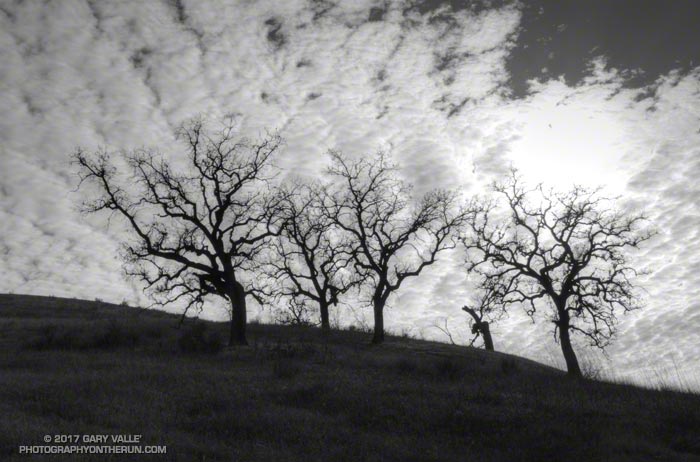
Category Archives: nature|clouds
Fallstreak Hole
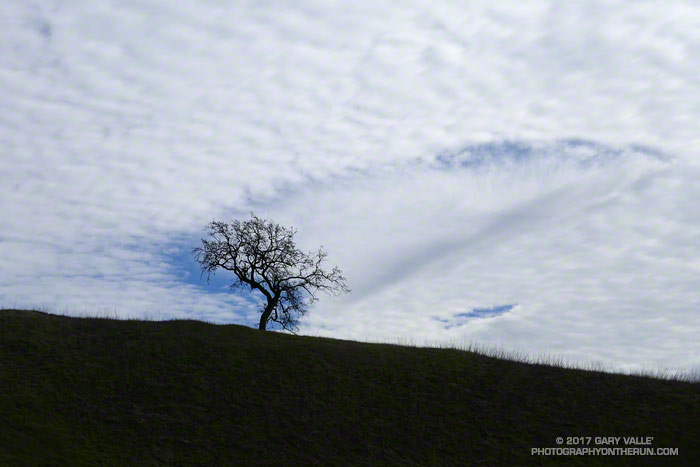
The oval disturbance in the layer of altocumulus clouds in this photograph is a relatively rare phenomenon called a fallstreak hole or hole punch cloud.
These altocumulus clouds are formed from super-cooled water droplets many times smaller than a raindrop. The droplets are in a liquid state even though the temperature is well below freezing. When disturbed by an aircraft passing through the layer the droplets freeze and precipitate out of the cloud as virga. This and other processes create the hole.
The photo was taken on Saturday, January 21, 2017 at 2:23 p.m. near the Las Virgenes trailhead of Upper Las Virgenes Canyon Open Space Preserve. The hole was well south of the area.
Rainy December for Los Angeles

Updated January 4, 2017.
Not since the beginning of the drought has Downtown Los Angeles experienced such a wet December. As of December 31, 2016:
• December rainfall was 2.22 inches above the monthly normal of 2.33 inches.
• The 4.55 inches of rain recorded was the wettest December since December 2010 and the most for any month since January 2010.
Since the Rain Year began July 1, 5.95 inches of rain has fallen at Downtown Los Angeles (USC). This is 1.63 inches above the normal July-December rainfall of 4.32 inches. It is the best start to the Rain Year (Jul 1-Jun 30) and Water Year (Oct 1-Sep 30) since 2010.
The photograph of Century City and Downtown was taken from Temescal Ridge while doing the Will Rogers – Temescal Canyon loop from the End of Reseda Saturday (December 24). According to NWS records Downtown Los Angeles recorded 2.32 inches of rain from December 21 to December 24..
Advancing Clouds
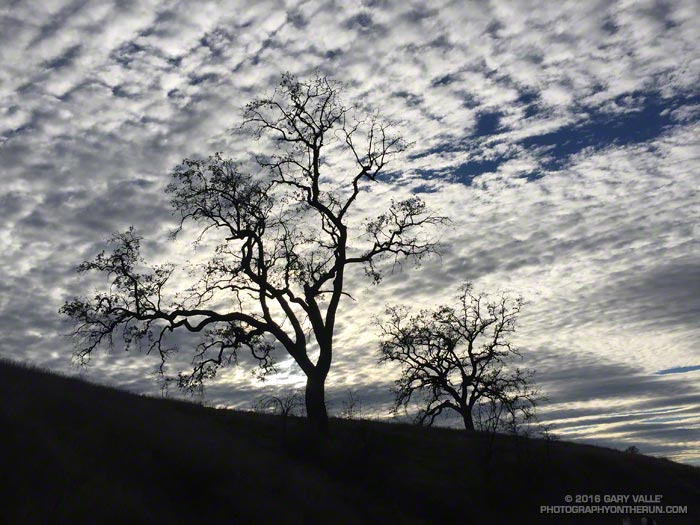
On my run today (Tuesday), the leading edge of the cloud shield associated with a cut-off upper level low southwest of the Los Angeles began to move into the area.
Systems such as this are notoriously difficult to forecast and computer models (and forecasters) often disagree. In this case the wetter solution won the day with a half-inch of rainfall being recorded at Downtown Los Angeles (USC) Wednesday evening.
The storm increased December’s rainfall total in Los Angeles to 2.26 inches — about 0.88 inch above normal for the month.
Manzanita Trail Morning
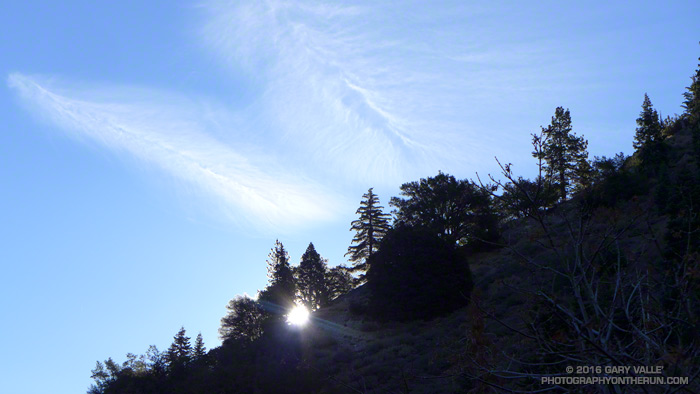
Many of the hikers and runners that park at Vincent Gap climb Mt. Baden-Powell via the Pacific Crest Trail. The PCT isn’t the only trail that can accessed here and Mt. Baden-Powell isn’t the only hike. Vincent Gap is also the trailhead for the Manzanita Trail, Big Horn Mine Trail and Mine Gulch Trail. My run today involved these three trails.
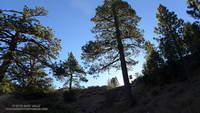
First up this morning was the Manzanita Trail. The trail is part of the High Desert National Recreation Trail and connects Vincent Gap to South Fork Campground. It’s about 5.5 miles long and can be done as an out and back or as part of an approximately 23.5 mile loop that joins Islip Saddle, South Fork Campground, Vincent Gap and Mt. Baden-Powell.
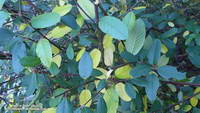
That loop is a favorite and this morning’s short run on the Manzanita Trail was to check if a small stream/spring I use as a water source was still running. Remarkably it was!
Some work had been done on the trail since I was there in June. A washed out section just below Vincent Gap had been repaired, the tread in several places improved, and the indistinct trail across the rocky wash about a mile down from Vincent Gap had been much improved.
Some related posts: South Fork Adventure, Trail Running Weather, San Gabriel Mountains Running Adventure, Islip Saddle – Mt. Baden-Powell South Fork Loop
Musch Trail Morning
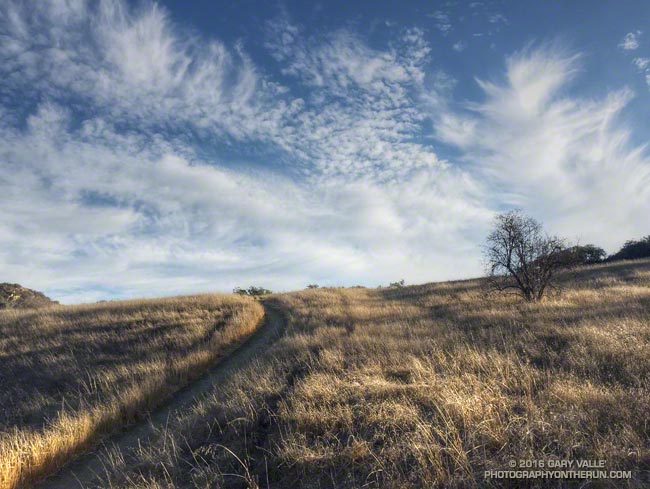
Long shadows and feathery clouds on the Musch Meadow Trail in Topanga State Park early this morning.
